The Yutu Rover Suffered A Mysterious “abnormality” Over The Weekend. And The Robot’s Microblogged
The Yutu rover suffered a mysterious “abnormality” over the weekend. And the robot’s microblogged death note may make you cry.
oh gosh!
More Posts from Fillthevoid-with-space and Others

Haaaaaay I’m on iTunes now! Slightly more convenient to download maybe!
What was the hardest part in training to go to space?
One of the most challenging parts of space training was learning how to use the space suit. We weigh over 400 pounds in the space suit, and since it is pressurized, each movement of your hands is like working against an exercise ball. Since the suit needs to be quite bulky in order to protect us from the environment of space (vacuum, radiation, micrometeoroids, extreme temperature) while doing a spacewalk, it makes body movements a bit awkward. Dexterity is quite compromised with the bulky gloves as well. Although it is challenging, however, it is likely also the most rewarding, because, well, you are in a SPACE SUIT!!! Hopefully I’ll get to do a spacewalk and look down on the our planet from above on a mission to the International Space Station in a few years.


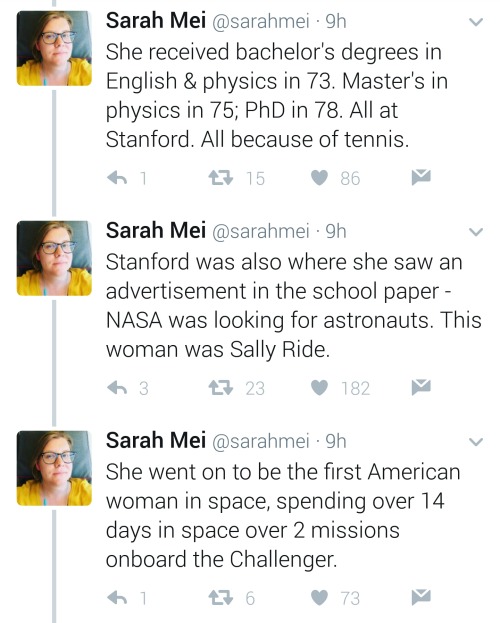
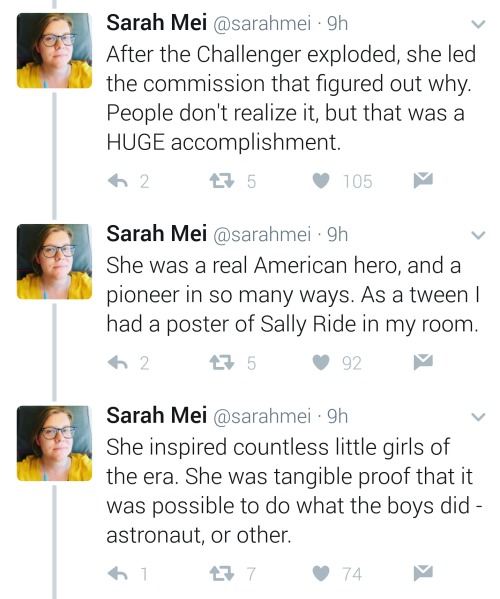
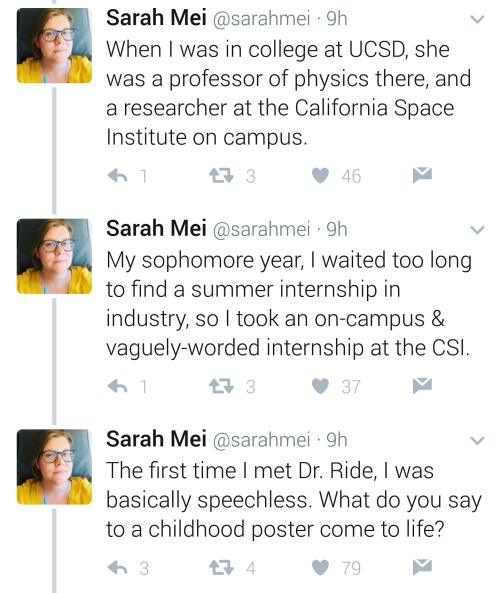
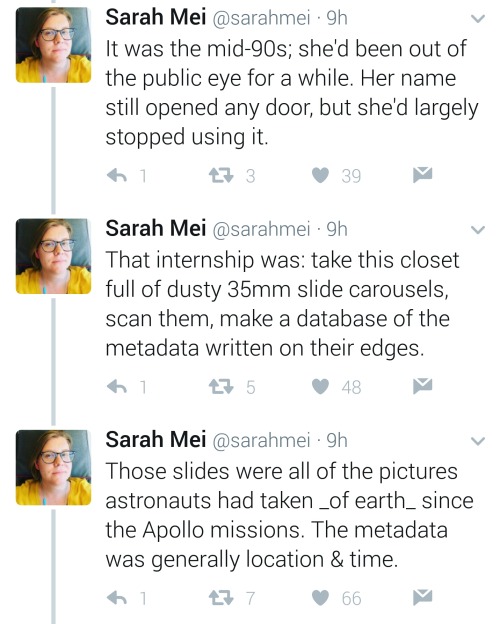
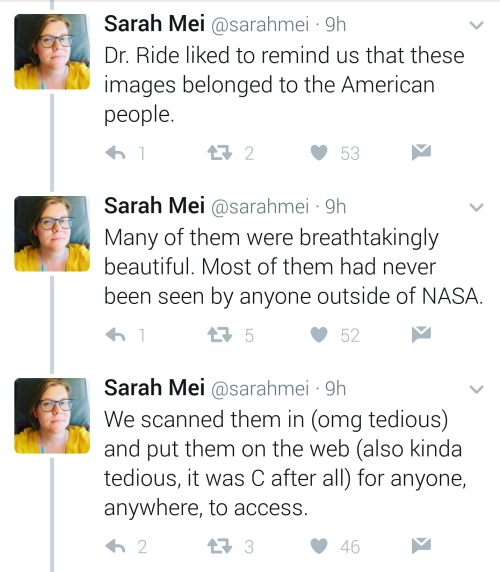
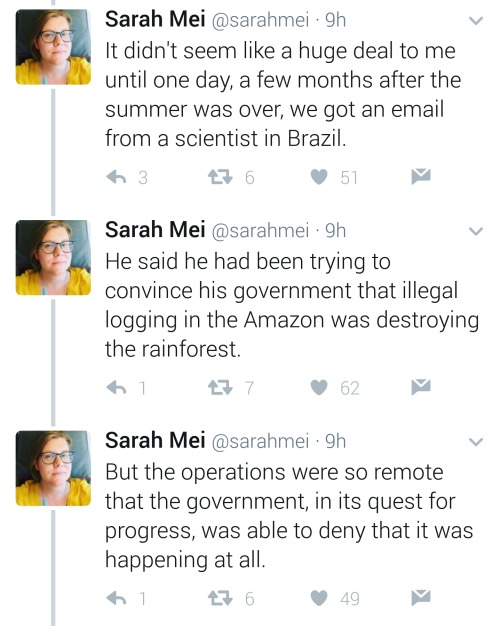
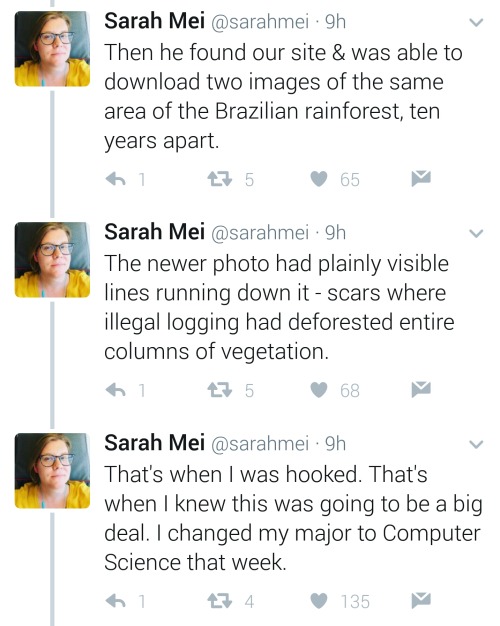
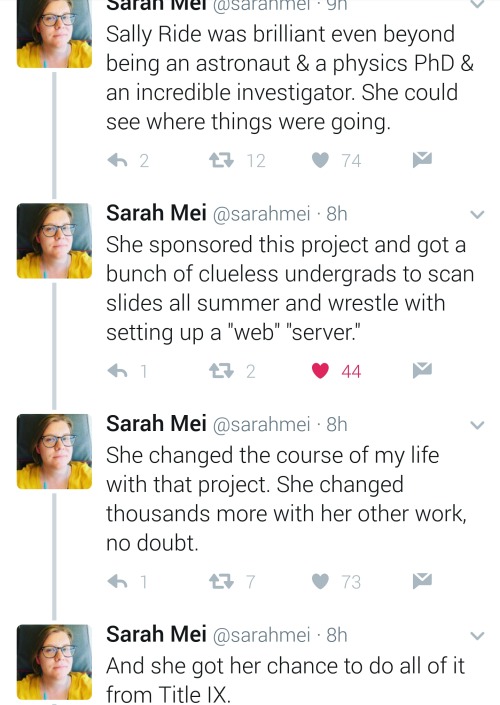
Equal opportunity benefits can be far-reaching
https://twitter.com/sarahmei/status/818682610712866817
SpaceX SES-10 Mission successfully Launch
SpaceX - Falcon 9 / SES-10 Mission patch. March 31, 2017
Falcon 9 carrying SES-10 satellite launch
SpaceX took a step into the future Thursday as it reused – for the first time – a recovered first stage of a previously-flown Falcon 9 rocket. Thursday’s mission, carrying the SES-10 communications satellite, lifted off from Pad 39A at Florida’s Kennedy Space Center Thursday 30 March at 18:27 local time (22:27 UTC) and once again landed the booster.
Falcon 9 launch of SES-10
Thursday’s mission made use Falcon 9 the second orbit-capable rocket – after the Space Shuttle – to achieve partial reusability. The Falcon 9 flew from Launch Complex 39A at the Kennedy Space Center, the same pad from which the Shuttle began eighty-two of its missions, including its first and final flights. Reusability has long been a key objective for SpaceX. Making the company’s first launch in March 2006, the small Falcon 1 vehicle carried a parachute system intended to bring its spent first stage back to Earth.
Falcon 9 first stage landed on drone barge
SpaceX’s Falcon 9 rocket deliver SES-10, a commercial communications satellite for SES, to a Geostationary Transfer Orbit (GTO). SES is a world-leading satellite operator, providing reliable and secure satellite communications solutions across the globe.
SES-10 satellite
The SES-10 mission mark a historic milestone on the road to full and rapid reusability as the world’s first reflight of an orbital class rocket. Falcon 9’s first stage for the SES-10 mission previously supported the successful CRS-8 mission in April 2016. For more information about SpaceX, visit: http://www.spacex.com/ Images, Video, Text, Credits: SpaceX/SES. Greetings, Orbiter.ch Full article




Check out the makeshift pinhole-camera results from 99% totality! Leaves and my own hands work quite nicely to get an image of the little sliver of sunlight that was left. I had eclipse glasses but don't have any pictures from them: 99% is still not enough to reduce the sun's light very much. It got a little gloomier and I talked about it on Twitter but otherwise it was pretty uneventful! I'm glad I'm not on the road home from eclipsing. It would be cool to see totality one day, though.

Aboard the International Space Station, astronaut Thomas Pesquet of the European Space Agency snapped this photo and wrote, ‘The view at night recently has been simply magnificent: few clouds, intense #aurora. I can’t look away from the windows.'
The dancing lights of the aurora provide stunning views, but also capture the imagination of scientists who study incoming energy and particles from the sun. Aurora are one effect of such energetic particles, which can speed out from the sun both in a steady stream called the solar wind and due to giant eruptions known as coronal mass ejections or CMEs. Credit: NASA/ESA
Make sure to follow us on Tumblr for your regular dose of space: http://nasa.tumblr.com
Tampons were packed with their strings connecting them, like a strip of sausages, so they wouldn’t float away. Engineers asked Ride, “Is 100 the right number?” She would be in space for a week. “That would not be the right number,” she told them. At every turn, her difference was made clear to her. When it was announced Ride had been named to a space flight mission, her shuttle commander, Bob Crippen, who became a lifelong friend and colleague, introduced her as “undoubtedly the prettiest member of the crew.” At another press event, a reporter asked Ride how she would react to a problem on the shuttle: “Do you weep?”
Astronaut Sally Ride and the Burden of Being “The First” (via dinosaurparty)

The hardest part of determining longitude was figuring out how sailors could find their longitudinal coordinates at sea. There were a lot of methods proposed but adding a ship into the equation makes precision difficult. Learn about the Longitude Act of 1714 and how, even though this podcast loves astronomy, the astronomical method might not always be the best option.
Below the cut are my sources, music credits, a timeline of the astronomers and engineers and clockmakers I mention, a vocab list, a really cool resource that lets you drag continents all over a flattened map of Earth to compare their sizes at different latitudes, and the transcript of this episode. Let me know what you think I should research next by messaging me here, tweeting at me at @HDandtheVoid, or asking me to my face if you know me in real life. And please check out the podcast on iTunes, rate it or review it if you’d like, subscribe, and maybe tell your friends about it if you think they’d like to listen!
(My thoughts on the next episode were the Voyager golden records, space race history, the transit of Venus, or maybe something about the Moon landing. I’m loving Edmond Halley again these days, too. I’m prepping to interview a friend about her graduate-level research into the history of the universe and possibly dark matter, too. Let me know by the 20th and I’ll hopefully have the next podcast up on September 25th! If not then, I’ll push for October 2nd.)
Glossary
azimuth - a section of the horizon measured between a fixed point and the vertical circle passing through the center of an object. See example in the link.
equator - Earth’s zero line of latitude. It’s the place on Earth where the Sun is directly overhead at noon on the vernal and autumnal equinoxes.
kamal - an Arabic navigation tool consisting of a knotted string and a piece of wood. A navigator would tie a knot in the string and, by holding it in their teeth, sight the North Star along the top of the wooden piece and the horizon along the bottom. To return home, the navigator would sail north or south to bring Polaris to the altitude they had observed in their home port, then turn left or right and sail down the latitude, keeping Polaris at a constant angle. Over time, Arab navigators started tying knots at regular intervals of a fingerwidth, called an issbah, that’s about 1 degree and 36 minutes.
magnetosphere - an invisible barrier that surrounds a celestial objet. It is often generated by the movement of the liquid metal core of the object. Around a planet, it deflects high-energy, charged particles called cosmic rays that can either come from the Sun or, less often, from interstellar space.
prime meridian - Earth’s zero degree of longitude. In current maps and time zones, this invisible, imaginary line runs through London, England.
sextant - a device used to determine an observer’s location based on the observation of a known celestial object and a lot of calculation. It is still in use by sailors.
tropic of cancer - a line of latitude that marks where the Sun will be at noon on the summer solstice.
tropic of capricorn - a line of latitude that marks where the Sun will be at noon on the winter solstice.
Script/Transcript
Sources
Longitude at Sea via The Galileo Project at Rice University
Vitamin C necessity via University of Maryland Medical Center
Scurvy via NHS
Scurvy via the Encyclopedia Britannica online
An interactive map that shows how our current map distorts land masses by letting you compare different countries’ sizes.
Sobel, Dava. Longitude. Walker & Co.; New York, 1995.
“anyone living below the Equator would melt into deformity from the horrible heat” (3).
“It simply urged Parliament to welcome potential solutions from any field of science or art, put forth by individuals or groups of any nationality, and to reward success handsomely” (53).
Timeline
Claudius Ptolemy, Greek (100-170 CE)
Johannes Werner (in Latin, Ioannis Vernerus), German (1468-1522)
Tycho Brahe, Danish (1541-1601)
Galileo Galilei, Italian (1564-1642)
Giovanni Cassini (in French, Jean-Dominique Cassini), Italian/French (1625-1712)
Christiaan Huygens, Dutch (1629-1695)
Sir Isaac Newton, English (1642-1726/7)
Ole Rømer, Danish (1644-1710)
John Flamsteed, English (1646-1719)
Edmond Halley, English (1656-1742)
John Hadley, English (1682-1744)
John Harrison, English (1693-1776)
Thomas Godfrey, American (1704-1749)
John Bird, English (1709-1776)
Larcum Kendall, English (1719-1790)
James Cook, English (1728-1779)
Nevil Maskelyne, English (1732-1811)
John Arnold, English (1736-1799)
Thomas Earnshaw, English (1749-1829)
Intro Music: ‘Better Times Will Come’ by No Luck Club off their album Prosperity
Outro Music: ‘Fields of Russia’ by Mutefish off their album On Draught
-
 superredvelvetcupcakesworld liked this · 1 year ago
superredvelvetcupcakesworld liked this · 1 year ago -
 paneutrois reblogged this · 2 years ago
paneutrois reblogged this · 2 years ago -
 plasticroachearrings liked this · 2 years ago
plasticroachearrings liked this · 2 years ago -
 aetla liked this · 5 years ago
aetla liked this · 5 years ago -
 killiax liked this · 5 years ago
killiax liked this · 5 years ago -
 melodicpianist reblogged this · 6 years ago
melodicpianist reblogged this · 6 years ago -
 ivykit626-writes reblogged this · 6 years ago
ivykit626-writes reblogged this · 6 years ago -
 mala-sentiunt liked this · 6 years ago
mala-sentiunt liked this · 6 years ago -
 darkwinged-dragon reblogged this · 6 years ago
darkwinged-dragon reblogged this · 6 years ago -
 darkwinged-dragon liked this · 6 years ago
darkwinged-dragon liked this · 6 years ago -
 rosentris-blog liked this · 7 years ago
rosentris-blog liked this · 7 years ago -
 idrinkbongwater reblogged this · 7 years ago
idrinkbongwater reblogged this · 7 years ago -
 utopians liked this · 7 years ago
utopians liked this · 7 years ago -
 veryinterseting reblogged this · 7 years ago
veryinterseting reblogged this · 7 years ago -
 tinyjamesbarnes liked this · 8 years ago
tinyjamesbarnes liked this · 8 years ago -
 simons-purple-hoodie reblogged this · 8 years ago
simons-purple-hoodie reblogged this · 8 years ago -
 simons-purple-hoodie liked this · 8 years ago
simons-purple-hoodie liked this · 8 years ago -
 fillthevoid-with-space reblogged this · 8 years ago
fillthevoid-with-space reblogged this · 8 years ago -
 mardenubes liked this · 8 years ago
mardenubes liked this · 8 years ago -
 aliennaota reblogged this · 8 years ago
aliennaota reblogged this · 8 years ago -
 aliennaota liked this · 8 years ago
aliennaota liked this · 8 years ago -
 queen-regnant reblogged this · 8 years ago
queen-regnant reblogged this · 8 years ago -
 tinyblackcats reblogged this · 8 years ago
tinyblackcats reblogged this · 8 years ago -
 kasualkaymer reblogged this · 8 years ago
kasualkaymer reblogged this · 8 years ago -
 rudimentrebirth reblogged this · 8 years ago
rudimentrebirth reblogged this · 8 years ago -
 fiftyscenes reblogged this · 8 years ago
fiftyscenes reblogged this · 8 years ago -
 fiftyscenes liked this · 8 years ago
fiftyscenes liked this · 8 years ago -
 tumbling-on-your-roof liked this · 8 years ago
tumbling-on-your-roof liked this · 8 years ago -
 softcore-captaincrunch liked this · 8 years ago
softcore-captaincrunch liked this · 8 years ago -
 flyy0ufools reblogged this · 8 years ago
flyy0ufools reblogged this · 8 years ago -
 salamancialilypad reblogged this · 8 years ago
salamancialilypad reblogged this · 8 years ago -
 daddysperfectlittledoll-blog reblogged this · 8 years ago
daddysperfectlittledoll-blog reblogged this · 8 years ago -
 daddysperfectlittledoll-blog liked this · 8 years ago
daddysperfectlittledoll-blog liked this · 8 years ago -
 laurelandmarigold reblogged this · 8 years ago
laurelandmarigold reblogged this · 8 years ago -
 trilobitelunch liked this · 8 years ago
trilobitelunch liked this · 8 years ago -
 autumnaria reblogged this · 8 years ago
autumnaria reblogged this · 8 years ago -
 somuchno reblogged this · 8 years ago
somuchno reblogged this · 8 years ago -
 gameboyvivi reblogged this · 8 years ago
gameboyvivi reblogged this · 8 years ago -
 gameboyvivi liked this · 8 years ago
gameboyvivi liked this · 8 years ago
A podcast project to fill the space in my heart and my time that used to be filled with academic research. In 2018, that space gets filled with... MORE SPACE! Cheerfully researched, painstakingly edited, informal as hell, definitely worth everyone's time.
243 posts













